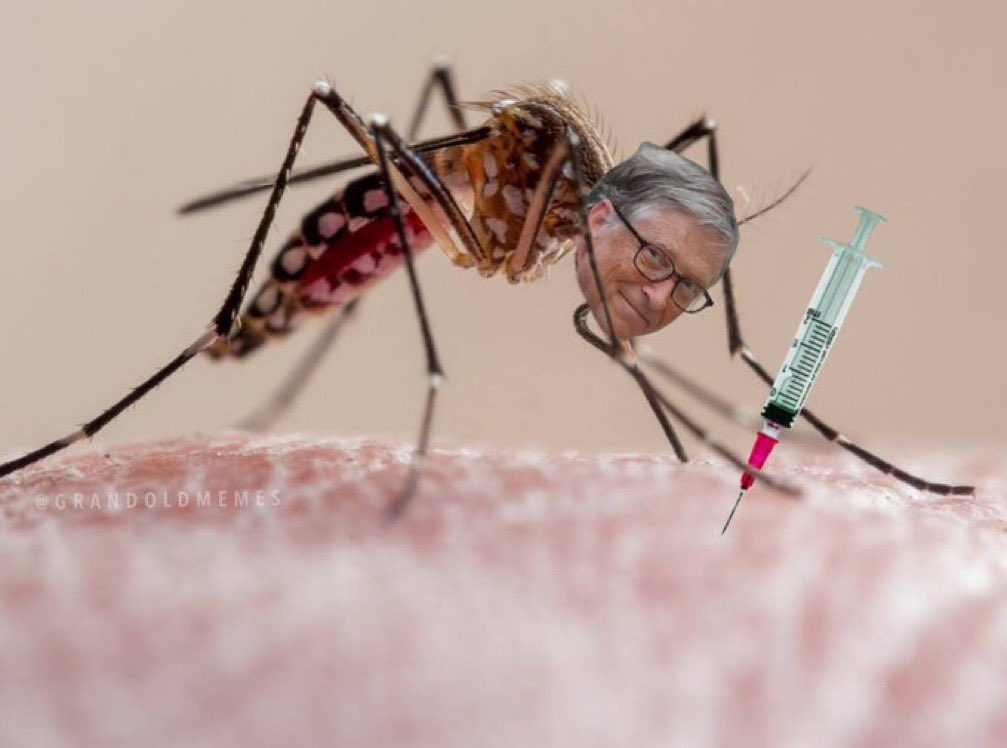Back in 2020 the BBC reported:
Local officials in Florida have approved the release of 750 million mosquitoes that have been genetically modified to reduce local populations.
The aim is to reduce the number of mosquitoes that carry diseases like dengue or the Zika virus.
The green-lighting of a pilot project after years of debate drew a swift outcry from environmental groups, who warned of unintended consequences.
One group condemned the plan as a public “Jurassic Park experiment”.
Now we have malaria.
Malaria hasn’t been seen in the US since 2003…
— Pelham (@Resist_05) September 1, 2023
Bill gates starts genetically engineering mosquitoes and all of a sudden malaria outbreak occurs in Florida… right where the mosquitoes were released…🚨🚨🚨 pic.twitter.com/jTtvhZf3y1
Genetically modified (GM) mosquitoes CDC
Aedes aegypti mosquitoes spread viruses including dengue, Zika, and chikungunya. Aedes mosquitoes are common throughout many areas of the United States.
Ae. aegypti mosquitoes can be genetically modified and used to control other Ae. aegypti mosquitoes in a community. In the United States, the U.S. Environmental Protection Agency (EPA) has authorized use of OX5034 GM Ae. aegyptimosquitoes for release in counties in Florida and Texas. This EPA authorization allows local mosquito control programs to evaluate how effective GM mosquitoes are in reducing Ae. aegypti mosquitoes in areas where they have been released.
How GM mosquitoes are produced and used to control Ae. aegypti mosquitoes
- Did You Know
- Only female mosquitoes bite. They need a blood meal to produce eggs.
- Male mosquitoes do not bite. They feed on nectar from flowers.
- A self-limiting gene that prevents female mosquito offspring from surviving to adulthood.
- A fluorescent marker gene that glows under a special red light. This allows researchers to identify GM mosquitoes in the wild.
- GM mosquitoes produced in the laboratory lay eggs. These eggs carry the self-limiting and fluorescent marker genes.
- GM mosquito eggs that carry the self-limiting gene are released into an area. Once they have hatched and develop through to the adult stage, they are available to mate with wild females. The genes are passed on to offspring.
- The female offspring die before they become adults. The expected result is that the number of Ae. aegypti mosquitoes in the area decreases.
Effectiveness of GM mosquitoes in reducing numbers of mosquitoes
- GM mosquitoes have been successfully used in parts of Brazil, the Cayman Islands, Panama, and India to control Ae. aegypti mosquitoes. Since 2019, over 1 billion mosquitoes have been released.
- When GM mosquitoes stop being released into an area, the Ae. aegypti mosquito population will slowly return to “normal levels.”
- GM mosquitoes will only work to reduce numbers of target mosquito species (e.g., Ae. aegypti), not other types of mosquitoes. Most communities have more than one type of mosquito.
GM mosquitoes do not pose a risk to people, animals, or the environment
The EPA evaluated the potential risk of releasing GM mosquitoes into communities and determined that there is no risk to people, animals, or the environment. For more information, see EPA’s Human Health and Ecological Risk Assessment.
GM mosquitoes for disease outbreak control
Release of GM mosquitoes is not intended to stop an ongoing disease outbreak. Instead, GM mosquitoes are meant to help prevent disease outbreaks. Releasing GM mosquitoes over several months can reduce the number of a specific mosquito species, such as Ae. aegypti. Reducing numbers of mosquitoes that can spread germs can help reduce the chance of an outbreak starting. We do know that the best way to prevent disease is to control mosquitoes before an outbreak happens.
GM mosquitoes and integrated mosquito management
Using GM mosquitoes may be more effective if used along with other mosquito control methods as part of an integrated mosquito management (IMM) approach, including:
- Educating the community about how they can control mosquitoes in and around their homes
- Conducting mosquito surveillance (tracking and monitoring the number of mosquitoes, and types of mosquitoes in an area)
- Removing standing water where mosquitoes lay eggs
- Using larvicides and insecticides to control mosquito larvae, pupae, and adult mosquitoes
- Monitoring how effective mosquito programs are at reducing numbers of mosquitoes.
